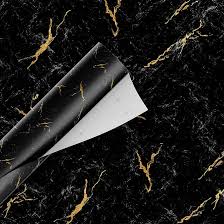- Home
- White Back Coated Duplex Board Supplier for Various Packaging Solutions
Nov . 04, 2024 14:05 Back to list
White Back Coated Duplex Board Supplier for Various Packaging Solutions
Coated Duplex Board with White Back A Comprehensive Overview of the Manufacturing Process
In today’s fast-paced packaging industry, the demand for high-quality materials has never been greater. Among these, coated duplex board with a white back is gaining considerable attention due to its versatility and superior performance characteristics. This article explores the manufacturing process, properties, and applications of coated duplex board, along with insights into leading manufacturers in the field.
Understanding Coated Duplex Board
Coated duplex board is a type of paperboard that consists of two layers of pulp. The outer layer, known as the top liner, is coated to improve printability and provide a smooth surface. The back, or reverse, side is typically uncoated or has a less finished appearance, making it ideal for various applications. The white back specifically enhances the board’s aesthetic appeal, allowing for vibrant printing while ensuring that the reverse side remains practical for various uses.
The Manufacturing Process
The production of coated duplex board involves several essential steps
1. Pulping The process begins with the selection of raw materials, primarily recycled paper and virgin pulp. These materials are processed in a pulping machine that breaks down the paper fibers into a slurry. This pulp is then cleaned and bleached to achieve the desired whiteness and quality.
2. Sheet Formation The pulp is pumped onto a forming machine, where water is removed to create sheets of paper. This sheet formation can be customized based on the thickness and weight required for the final product.
3. Drying The formed sheets undergo a drying process, where heat is applied to remove any residual moisture. This step is crucial as it affects the board’s strength and durability.
4. Coating After drying, the top surface of the board is coated with a mixture of pigments and adhesives. This coating not only enhances the board’s printability but also improves its barrier properties, making it suitable for packaging applications that require moisture resistance.
coated duplex board white back manufacturer

5. Finishing Once coated, the duplex board is subjected to a finishing process, which may include glazing or calendering. These steps provide additional smoothness and gloss, ensuring the surface is ready for high-quality printing.
6. Cutting and Packaging Finally, the coated duplex board is cut into sheets or rolls based on customer specifications. It is then packaged and prepared for distribution to various industries, including food and beverage, electronics, and consumer goods.
Properties and Applications
Coated duplex board with a white back possesses several distinguishing properties. Its high brightness and smooth finish make it an ideal choice for high-resolution printing. Additionally, the board offers excellent stiffness, making it suitable for structural applications, such as boxes and packaging materials.
The versatility of coated duplex board allows it to be used in various applications including
- Food Packaging Due to its protective coating, it provides an excellent barrier against moisture and grease. - Folding Cartons The board’s strength and printability make it a preferred choice for consumer goods packaging. - Promotional Materials Businesses use coated duplex board for brochures, posters, and displays due to its superior print quality.
Leading Manufacturers
Several manufacturers around the world specialize in producing coated duplex board with a white back. These companies utilize advanced technology and sustainable practices to ensure high standards of quality and environmental responsibility. Notable players in the market invest in research and development to create innovative products that meet changing consumer demands.
Conclusion
Coated duplex board with a white back represents a crucial material in the packaging and printing industries. Through a meticulous manufacturing process, this versatile board offers impressive properties that cater to a wide range of applications. As consumer preferences evolve, the continued innovation and efforts of manufacturers will undoubtedly shape the future of coated duplex board, making it a staple in sustainable packaging solutions.
Latest news
-
High-Quality Bathroom Cabinet Contact Paper – Durable & Stylish Leading Suppliers, Exporters, Manufacturers
NewsJul.08,2025
-
Premium Wood Contact Paper for Desk – Reliable Suppliers & Exporters
NewsJul.08,2025
-
Premium Contact Paper for Table Top – Durable & Stylish Surface Solution from Leading Manufacturer
NewsJul.07,2025
-
Duplex Board with Grey Back - Reliable Supplier & Competitive Price Manufacturer & Exporter
NewsJul.07,2025
-
Premium White Contact Paper on Cabinets – Trusted Exporters & Suppliers
NewsJul.06,2025
-
High-Quality Duplex Board Packaging for Food Reliable Manufacturer & Supplier
NewsJul.06,2025

